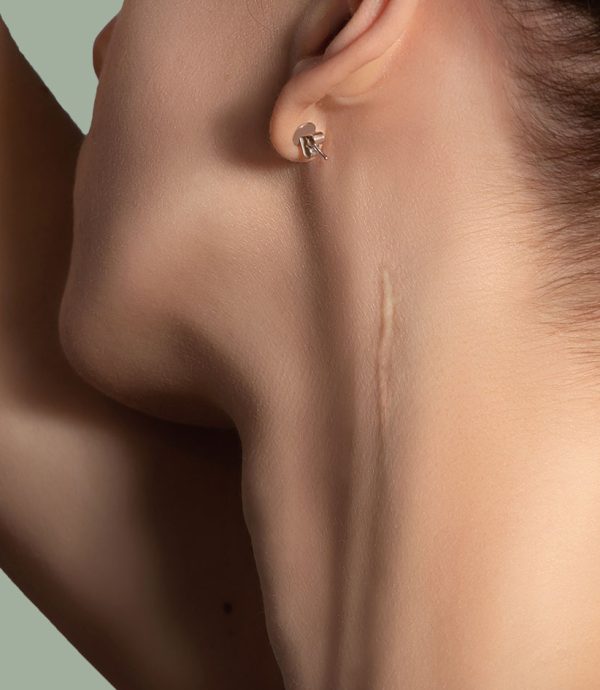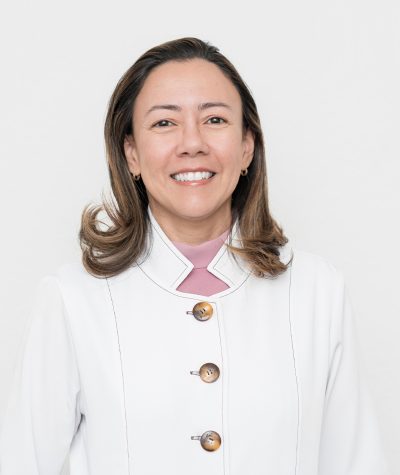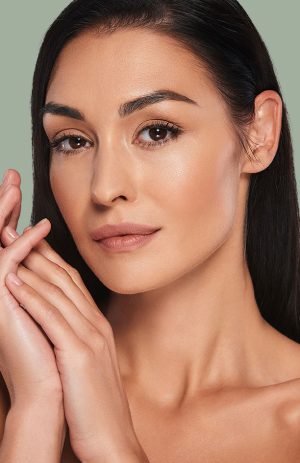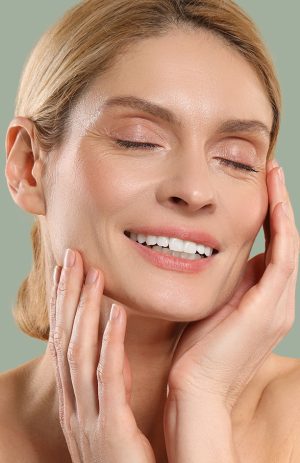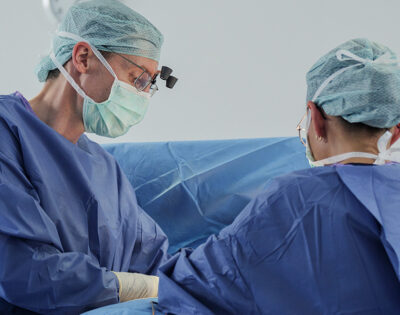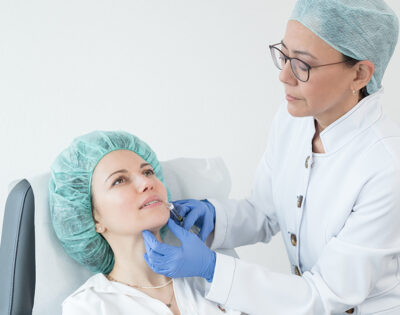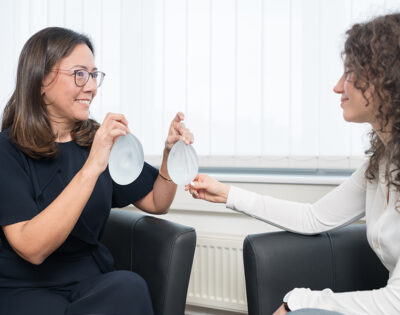Healing a scar & scar treatment
Scars are not just an aesthetic problem. Scars near the joints restrict mobility. Scars near the eye impair the closing of the eye or lead to a watery eye. Scars around the mouth distort the facial expression.
What our patients say
How a scar develops
The aim of a good skin suture is a tension-free, gentle and precise adaptation of the wound edges so that the wound heals as inconspicuously and quickly as possible. For this reason, wounds are ideally sutured with very fine sutures and under optical magnification.
- week: Scabs form during these days.
- Week: Final scar tissue develops, the wound contracts.
- Week 2: The scar tissue begins to lighten and slowly flattens out. The scar has reached 20% of its final strength.
Scar healing takes 6 to 12 months. In the first few months, scars are red, possibly painful or itchy and sometimes slightly raised above the skin level.
As a rule, scars are pale, soft, painless and flat after one year.

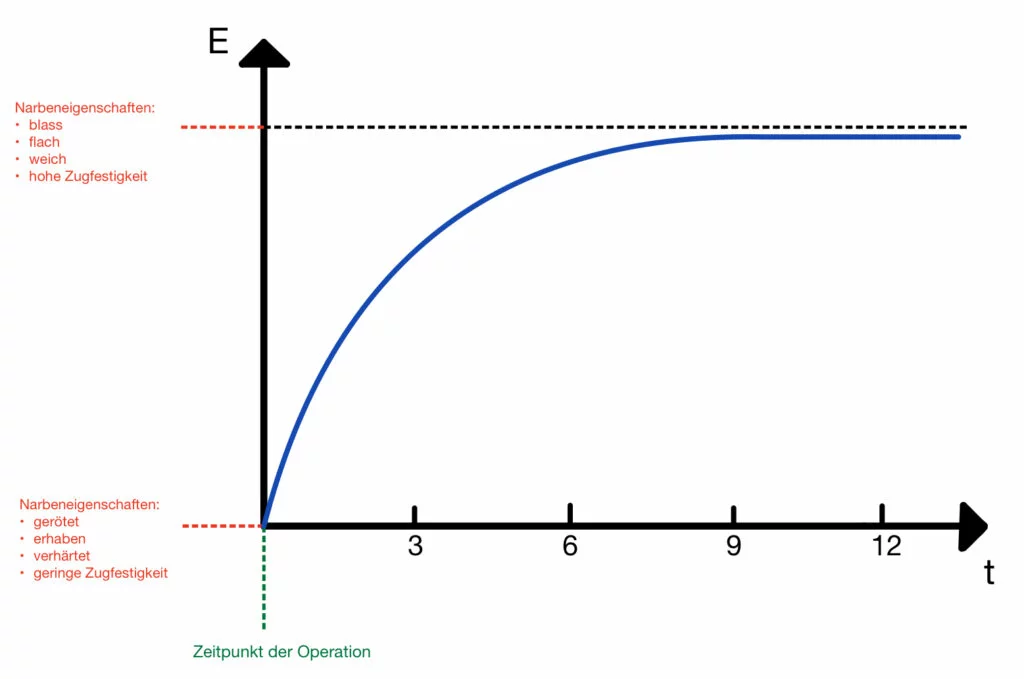
Mathematically speaking, the course of scar healing can be compared to an asymptotic curve. This means that a lot changes in the first weeks and months. Collagen is produced to close the wound as quickly as possible. As a result, the collagen is remodeled so that it is ideally aligned with the skin’s tension conditions. The conversion takes much longer. Initially, the scar may be red, raised, hardened and itchy. After nine to twelve months, the scar eventually becomes pale, flat and soft. After one year, a scar has reached its maximum tensile strength. However, a scar does not reach the tensile strength of the original tissue.
Wound and scar healing
Wound and scar healing takes place in four different stages. The first step is to activate blood clotting in the wound. The second phase involves the migration of white blood cells, which protect the body from the invasion of germs. In the third phase, the formation of collagen by connective tissue cells predominates. In the final stage of the fool’s healing process, the collagen is remodeled and aligned according to the skin’s tension forces. The last phase lasts about a year for young people.
1) Blood coagulation (day 1)
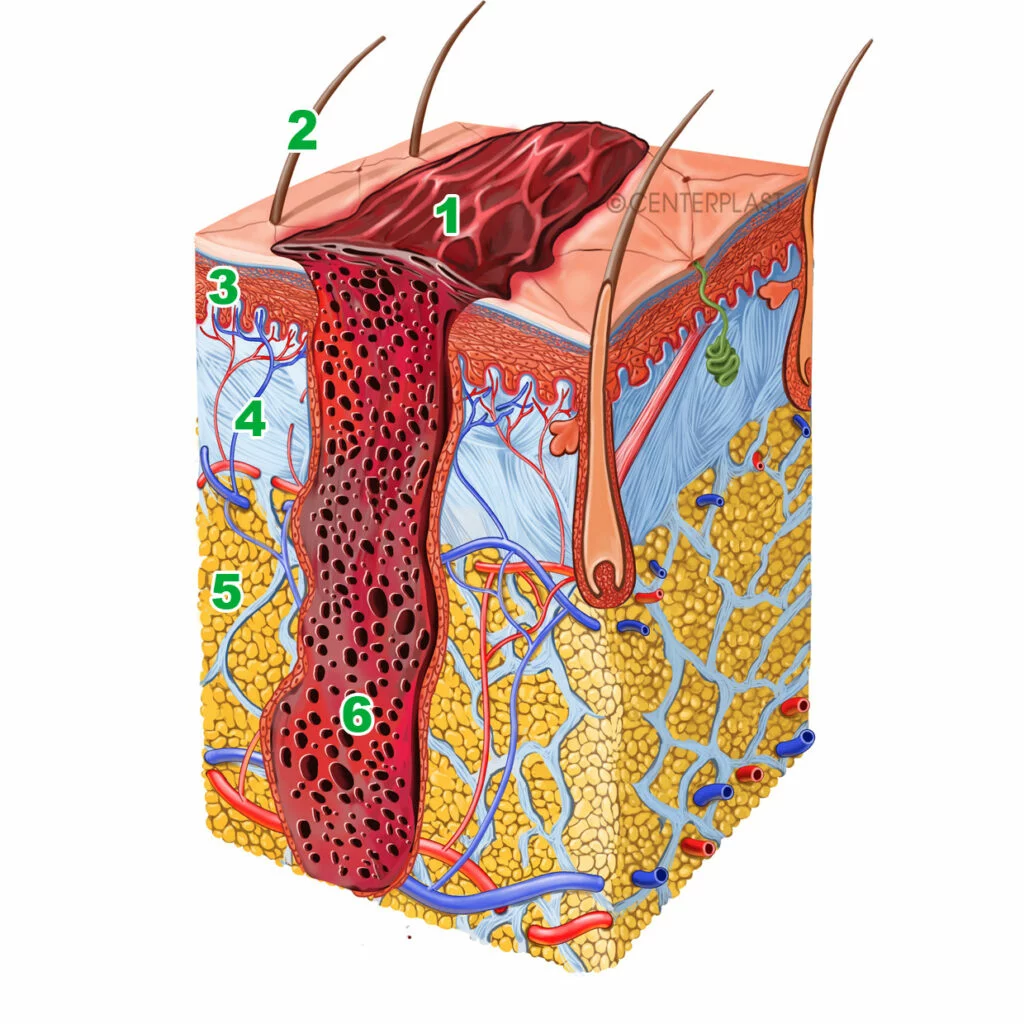
2) Inflammatory reaction (day 2-3)
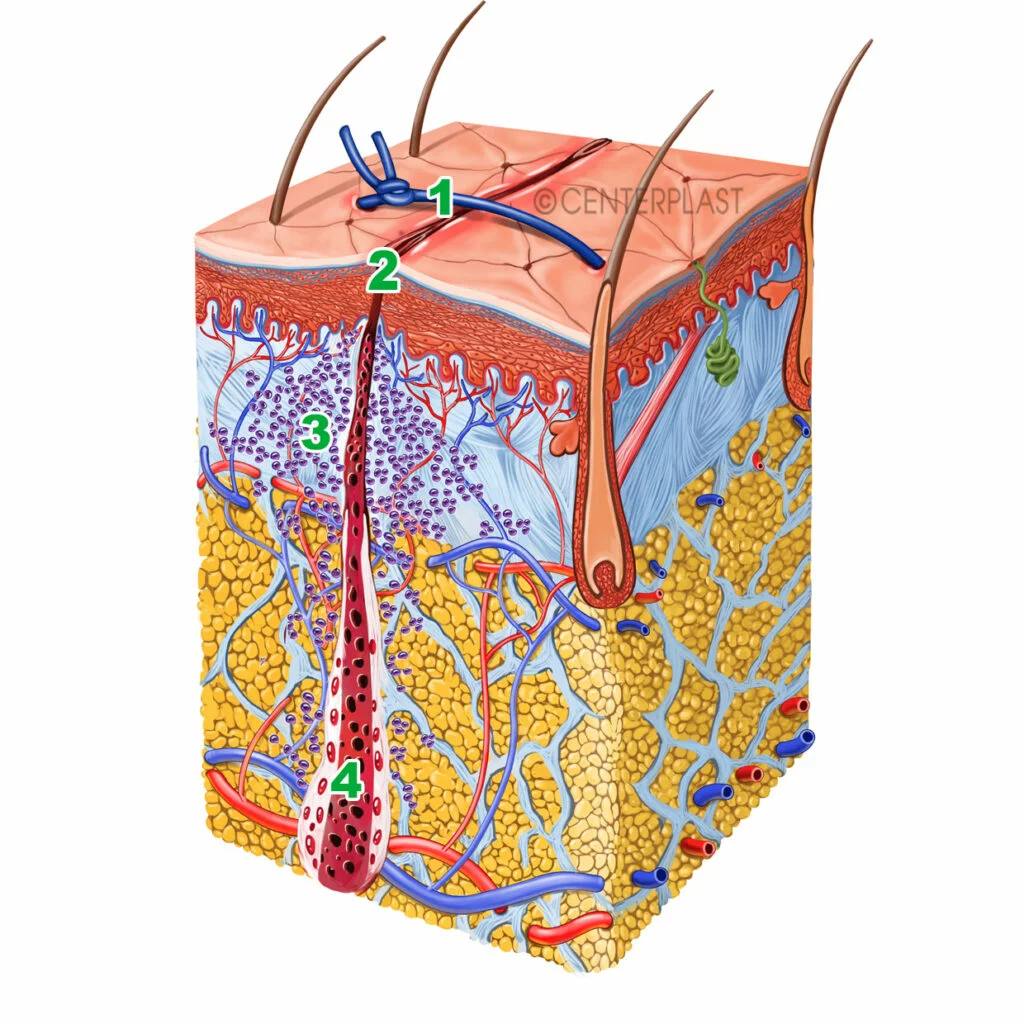
3) Cell proliferation (day 3-7)

4) Conversion phase (from day 8)

What can I contribute to scar healing?
- UV rays (sun or solarium) can lead to a permanent dark discoloration of the scar. You should therefore protect your scar with sun protection factor 50 or UV-impermeable clothing, especially in the first year.
- The healing of wounds and scars is negatively influenced by the following factors: smoking, excessive exercise or bacterial colonization.
- In the third postoperative week, scar healing can be supported by multiple daily massages. How? It is best to apply for a few minutes in a circular motion, along and across the course of the scar and with greasy creams such as Bepanthen® Ointment / Linola® Fat.
- Silicone plasters prevent the formation of bulges and soften the scar (e.g. Cica-Care from Smith and Nephew or Medipatch Gel Z® from asclepios Medizintechnik e.K.). The silicone plaster should be worn continuously for a year for this purpose.
- Compression treatment with special compression garments also supports favorable scar healing. The compression garment must also be worn continuously for the entire duration of scar healing, i.e. one year.
What are the differences between a hypertrophic scar and a proliferative scar?
| Bulging scar (hypertrophic scar) |
| Proliferating scar (keloid) |
| Bulging scar (hypertrophic scar) |
| Sublime, limited to the wound |
| Proliferating scar (keloid) |
| Proliferating beyond the edges of the wound |
| Bulging scar (hypertrophic scar) |
| Regresses |
| Proliferating scar (keloid) |
| No tendency to regress |
| Bulging scar (hypertrophic scar) |
| No predilection sites |
| Proliferating scar (keloid) |
| Especially on the ears, sternum |
| Bulging scar (hypertrophic scar) |
| Spontaneous regression |
| Proliferating scar (keloid) |
| No regression |
| Bulging scar (hypertrophic scar) |
| No risk of recurrence |
| Proliferating scar (keloid) |
| High risk of recurrence |
| Bulging scar (hypertrophic scar) |
. |
| Proliferating scar (keloid) |
Contracture
| Bulging scar (hypertrophic scar) |
| Excision, cortisone infiltration, pressure, silicone |
| Proliferating scar (keloid) |
| Excision, cortisone infiltration, pressure, silicone, radiation, 5-fluorouracil |
Scar correction
As the scars spontaneously become paler, flatter and softer up to one year after wound closure and the pain is reduced, surgical scar corrections should not be performed earlier. In the case of medical indications, such as functional limitations, the treatment costs are generally covered by health insurance.
FAQ – Frequently asked questions
Growing, itchy, reddish or dark scars are referred to as scar growths. Scar growths are technically known as keloids. The main characteristic of a keloid is that it grows beyond the boundaries of the injured tissue after the wound has already closed. Keloids occur preferentially on the ears, shoulders and upper chest area.
Hypertrophic scars are thick raised scars that do not grow beyond the scar line. However, the healing phase takes up to a year.
Injuries to the skin that lead to tissue loss, such as burns, can produce a firm and contracted scar. This is known as contracture. For surgical treatment, the contracture must be removed and the defect covered with a skin flap or graft.
- Surgical scar correction
- Z-sculptures
- W-plastics
- Injecting scars with autologous fat
- Microneedling against scars
- The injection of scars with cortisone
The result of scar correction depends on the type, size and course of the scar as well as on individual wound healing, postoperative protection and scar care.
Choosing the right treatment together with you is the decisive step to success. We carry out the following treatments frequently and with good experience:
- Removal of the keloid
- Injection of the keloid with cortisone
- Injection of the keloid with 5-fluorouracil
Because keloids recur repeatedly, combined procedures such as surgical removal with injections or radiotherapy are very beneficial. Pressure bandages with silicone films delay recurrence.

AUTHOR
Dr. Stéphane Stahl
We provide you with extensive expert knowledge in order to select the best possible treatment path together with you.
Privatdozent Dr. med. Stéphane Stahl is the former Director of the Clinic for Plastic, Reconstructive and Aesthetic Surgery / Hand Surgery at Lüdenscheid Hospital. Dr. Stahl studied medicine at the Universities of Freiburg and Berlin.
He passed the European specialist examination for plastic and aesthetic surgery in 2011 and the German specialist examination in 2012. This was followed by further specialist qualifications and additional qualifications (including quality management, medical didactics, physical therapy, emergency medicine, laser protection officer, hand surgery) as well as prizes and awards.
In 2015, he completed his habilitation in plastic and aesthetic surgery in Tübingen. He is an experienced microsurgeon, sought-after expert witness and regular speaker at specialist congresses. Following a multi-stage selection process, Stéphane Stahl became a member of the American Society for Aesthetic Plastic Surgery (ASAPS), one of the world’s largest and most influential specialist societies for aesthetic surgery.
His authorship includes numerous articles in prestigious peer review journals and standard surgical textbooks.
You might also be interested in

Personal advice
We take time for you and offer you customized advice and treatment for your individual result.
